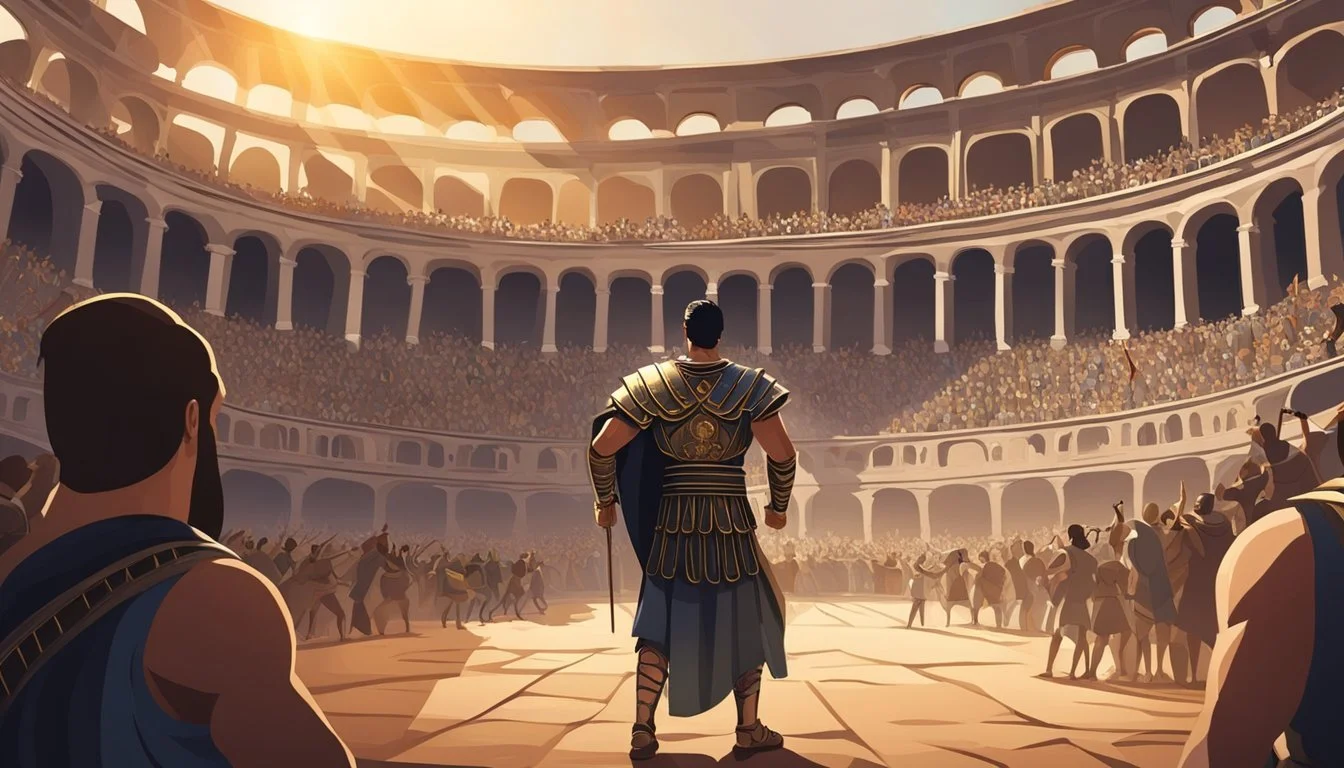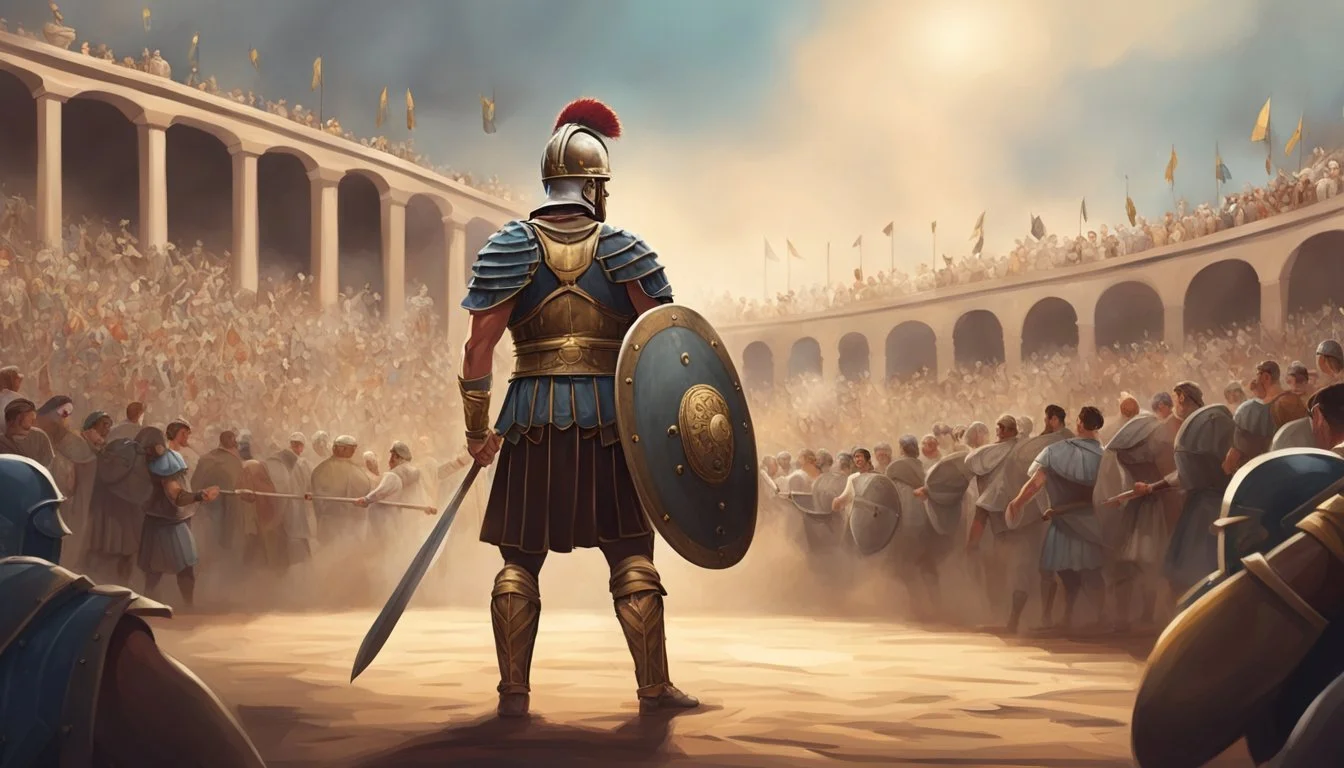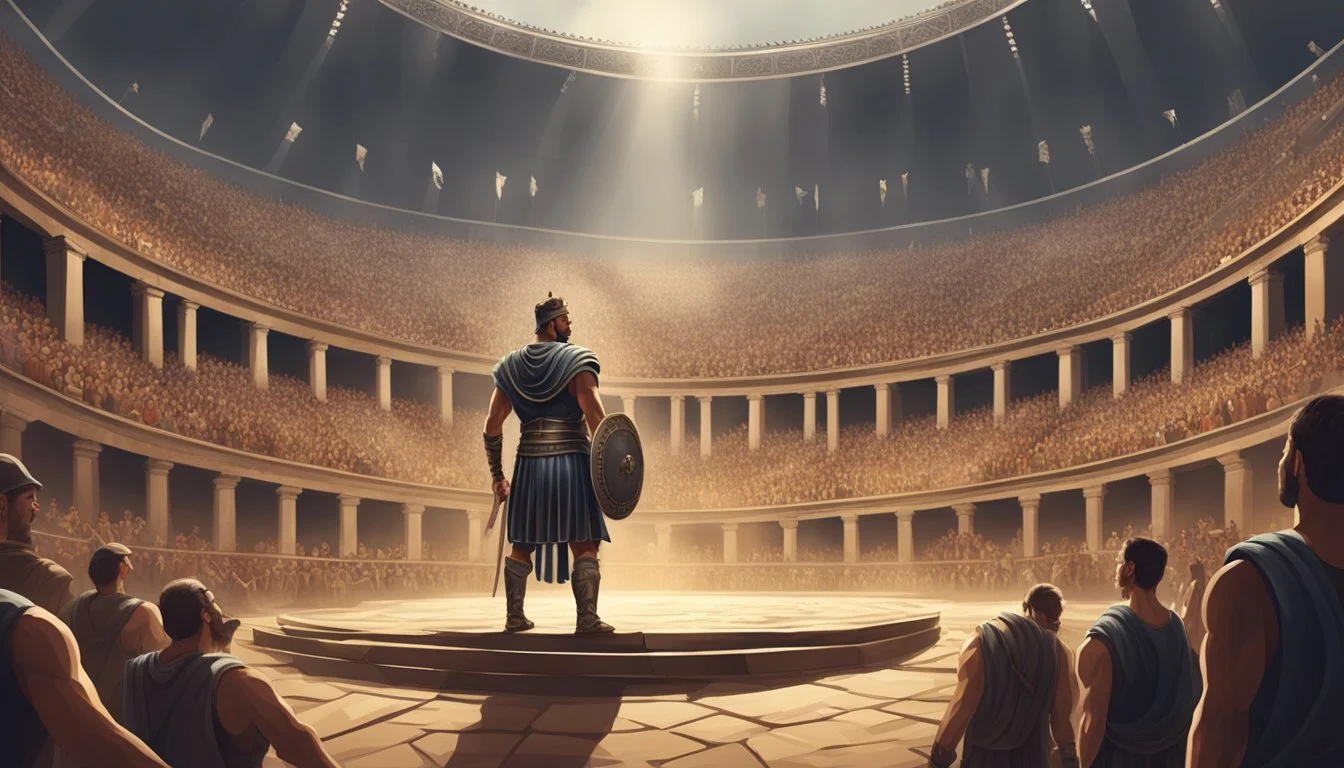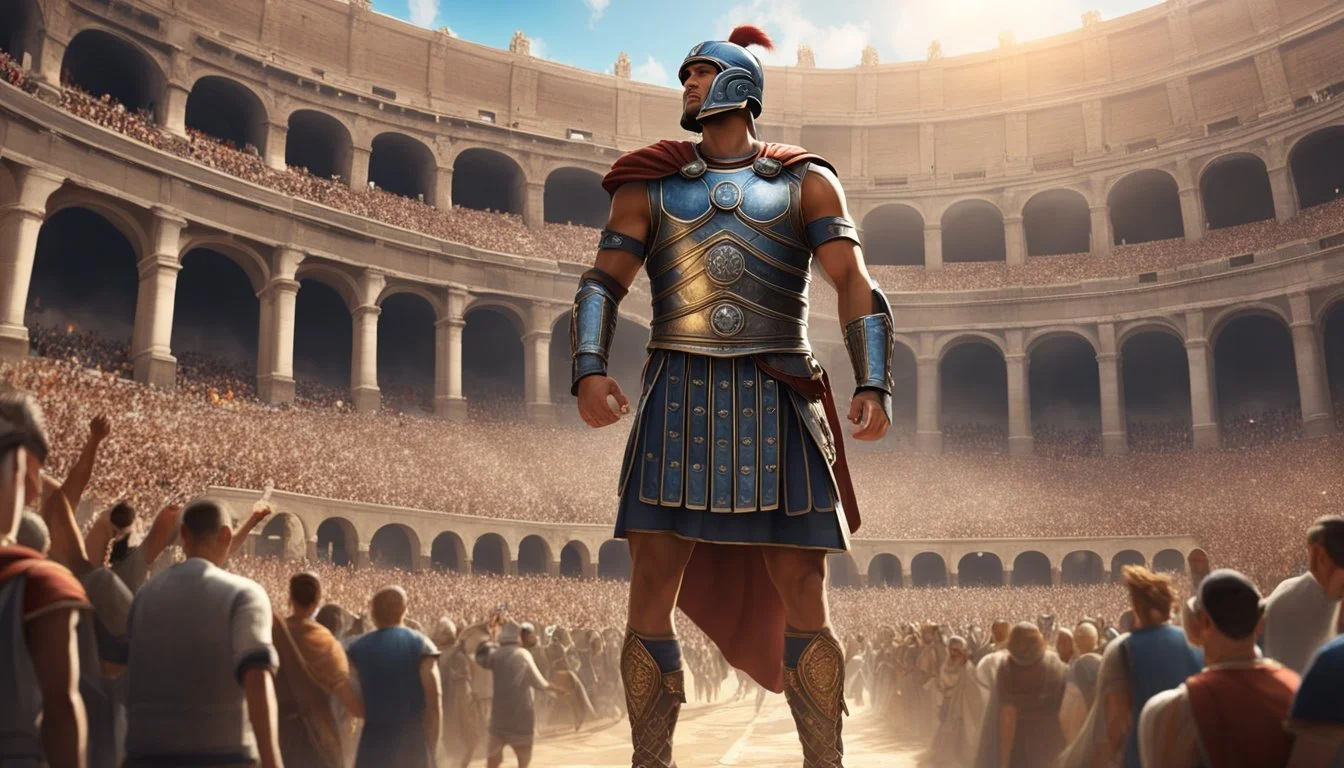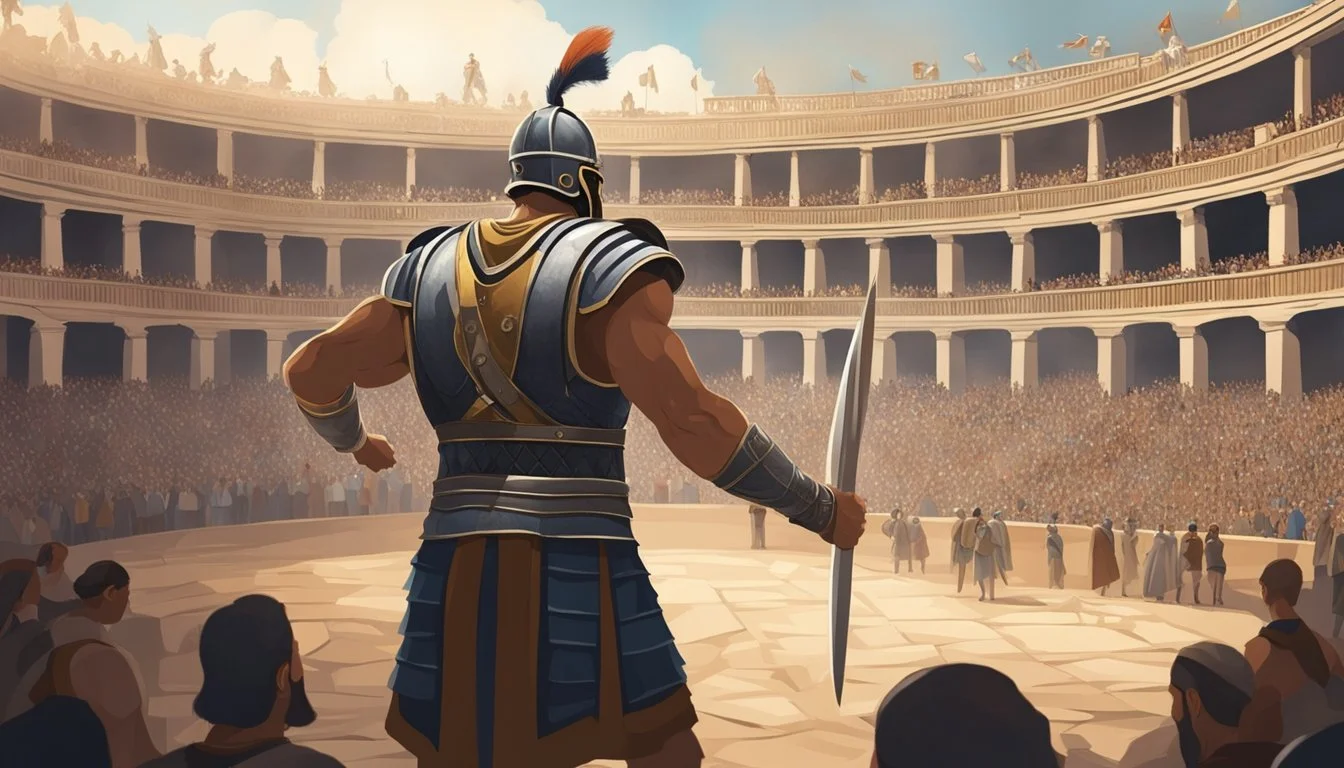The Genuine Gladiator: Historical Accuracy vs. Hollywood Spectacle
Separating Fact from Fiction in Ancient Rome
Gladiatorial combat has long captured the imagination of audiences, from ancient Roman arenas to modern cinema screens. The "Gladiator" film franchise stands as a testament to this enduring fascination. While these movies offer thrilling entertainment, they often blur the line between historical fact and cinematic fiction.
The original "Gladiator" film took significant creative liberties with historical events, prioritizing dramatic storytelling over strict accuracy. Some aspects, like the depiction of Marcus Aurelius as a competent ruler, aligned with historical accounts. However, many plot points and visual elements were embellished or fabricated for theatrical effect.
The upcoming "Gladiator II" appears to follow a similar pattern. Early glimpses suggest a mix of historical elements and imaginative spectacle. Scenes like a gladiator facing a rhinoceros, while visually striking, lack historical basis. This blend of fact and fiction underscores the challenge of balancing entertainment value with historical authenticity in Hollywood productions.
The Roman Gladiator: Historical Context
Gladiators emerged as a prominent feature of Roman culture during the Republican era. These combatants typically came from the ranks of slaves, prisoners of war, or condemned criminals.
The gladiatorial games served multiple purposes in Roman society. They provided entertainment for the masses and demonstrated the power of the Roman state. Additionally, these spectacles reinforced social hierarchies and political authority.
Gladiators underwent rigorous training in specialized schools called ludi. They learned combat techniques, weaponry skills, and physical conditioning. Despite their low social status, some gladiators achieved fame and admiration for their prowess in the arena.
The types of gladiators varied, each with distinct armor and weapons:
Murmillo: Heavily armored, wielding a large rectangular shield and short sword
Retiarius: Lightly armored, using a net and trident
Thraex: Equipped with a small rectangular shield and curved sword
Contrary to popular belief, gladiatorial combats were not always fought to the death. Many battles ended with one fighter's submission or at the discretion of the game's sponsor.
Women occasionally participated as gladiators, though this practice was relatively rare and eventually banned by Emperor Septimius Severus in 200 CE.
The gladiatorial games began to decline in the late Roman Empire. Emperor Constantine I prohibited gladiatorial combats in 325 CE, though they continued sporadically until their final ban by Emperor Honorius in 404 CE.
Gladiatorial Games: From Reality to Reel
Gladiatorial games were a central part of Roman entertainment, evolving from religious rituals to grand spectacles. Their depiction in cinema has often blurred the line between historical fact and dramatic fiction.
Origins and Evolution of Roman Entertainment
Gladiatorial contests originated as funeral rites in the 3rd century BCE. They gradually transformed into popular public events held in amphitheaters across the Roman Empire.
Initially, these games featured prisoners of war and criminals. Over time, they included trained professionals and volunteers seeking fame and fortune.
The Colosseum, completed in 80 CE, became the iconic venue for these spectacles. It could hold up to 50,000 spectators and featured complex staging mechanisms.
Games varied in format, from one-on-one combats to elaborate reenactments of historical battles. Animal hunts (venationes) were also popular, showcasing exotic beasts from across the empire.
Comparative Analysis of Cinematic Representation
Films often exaggerate the scale and brutality of gladiatorial games for dramatic effect. The "Gladiator" franchise, while visually stunning, takes significant liberties with historical accuracy.
In reality, not all fights were to the death. Many gladiators were valuable assets, and their survival was economically important to their owners.
Movies frequently depict gladiators facing wild animals like lions or tigers. While animal hunts did occur, gladiators rarely fought large predators directly.
The social status of gladiators in films is often romanticized. While some achieved fame, most were considered low-class entertainers or slaves.
Cinematic portrayals often simplify the complex rules and rituals surrounding gladiatorial combat, focusing instead on action and spectacle.
Equipment and Armaments: Fact vs. Fiction
Gladiatorial combat equipment varied significantly between historical reality and Hollywood portrayals. Ancient Roman arenas saw diverse weaponry and armor, while films often take creative liberties for dramatic effect.
Authentic Gladiator Gear
Gladiators used specialized equipment based on their fighting style and role. Common weapons included the gladius (short sword), trident, and net. Armor varied, with some gladiators wearing elaborate helmets and others fighting bare-chested.
The scutum, a large rectangular shield, protected many fighters. Lighter shields like the parma were also used. Leg guards called greaves protected limbs from attacks.
Different gladiator types had distinct gear. Retiarii fought with nets and tridents, while murmillones wielded swords and large shields. Historical evidence shows gladiators rarely fought to the death, contrary to popular belief.
Hollywood's Interpretation of Combat Gear
Films often exaggerate or modify gladiatorial equipment for visual appeal. Movie gladiators frequently sport impractical armor designs that prioritize aesthetics over historical accuracy.
Hollywood depictions sometimes show gladiators using weapons from different historical periods or cultures. For example, some films feature medieval-style longswords or Asian martial arts weapons in Roman arenas.
Costume designers often add elaborate decorations to helmets and armor that would have been impractical in real combat. Movie gladiators typically appear more heavily armored than their historical counterparts, who often fought with minimal protection to showcase their skills and bravery.
Training and Combat: The Life of a Gladiator
Gladiators underwent intense physical and mental preparation for their arena battles. Their training focused on developing combat skills, strength, and endurance to survive deadly encounters.
Historic Training Regimens
Gladiator schools (ludi) operated strict training programs. New recruits started with wooden weapons before progressing to steel. Daily routines included:
Strength training with weights
Endurance exercises like running and swimming
Combat drills and weapon practice
Specialized fighting techniques for different gladiator types
Diets were protein-rich to build muscle mass. Trainers, known as lanistae, oversaw gladiators' development. Discipline was harsh, with punishments for poor performance.
Depictions of Battle Scenes and Combat Skills
Arena combat emphasized spectacle and skill. Gladiators typically fought in pairs, matched by fighting style and experience. Common tactics included:
Shield blocks and parries
Quick thrusts with short swords
Throws and grappling moves
Elaborate footwork to outmaneuver opponents
Fights rarely ended in death, contrary to popular belief. Skilled gladiators were valuable assets. Referees supervised matches, enforcing rules and stopping bouts when necessary.
Hollywood often exaggerates the violence for dramatic effect. Real gladiatorial combat focused more on technique and showmanship than gratuitous bloodshed.
Screenwriting and Storytelling: Creative Liberties
Filmmakers often take creative liberties when adapting historical events for the screen. This practice allows them to craft compelling narratives while maintaining the essence of the past.
Scripting Gladiator Lives
The film "Gladiator" blends historical elements with fictional storytelling. Writers created composite characters and altered timelines to enhance dramatic impact. For instance, the character of Maximus is fictional, inspired by various historical figures.
Real gladiators fought for fame and fortune, not revenge against emperors. The script embellishes their motivations to create a more engaging protagonist. Gladiatorial combat scenes incorporate authentic details but exaggerate the scale and frequency of battles for cinematic effect.
Writers reimagined Emperor Commodus as a more villainous figure than historical accounts suggest. This creative choice heightens the conflict and provides a clear antagonist for the story.
Balancing Fact and Drama
Screenwriters face the challenge of balancing historical accuracy with narrative requirements. They must decide which facts to preserve and where to take creative liberties. In "Gladiator," the broad strokes of Roman society and politics remain intact.
The film accurately depicts the importance of gladiatorial games in Roman culture. However, it simplifies complex political dynamics for storytelling purposes. Writers condensed historical timelines, compressing events that occurred over years into a more manageable narrative arc.
Costume and set designs draw from historical research but incorporate artistic interpretations. This approach creates a visually striking world that feels authentic while serving the story's needs. Dialogue is modernized to resonate with contemporary audiences, sacrificing linguistic accuracy for clarity and emotional impact.
Academic vs. Audience Perspectives
Scholars and general audiences often view historical films like Gladiator through different lenses. Academic critiques focus on factual accuracy, while public reception emphasizes entertainment value and emotional impact.
Scholarly Critique of Gladiatorial Depictions
Historians have scrutinized Gladiator's portrayal of ancient Rome. They praise the film's attention to certain details, like Marcus Aurelius's character and the process of freeing gladiators. However, academics point out numerous inaccuracies.
The use of catapults in forest battles is highlighted as a major historical error. Scholars also note anachronisms in weaponry and battle tactics.
Some historians argue that the film oversimplifies Roman politics and social structures. They contend that Gladiator presents a romanticized version of gladiatorial combat, glossing over its brutal realities.
Public Perception and Entertainment Value
General audiences have largely embraced Gladiator for its gripping narrative and visual spectacle. The film's epic scale and emotional storytelling resonate with viewers, often overshadowing historical inaccuracies.
Many moviegoers appreciate Gladiator for rekindling interest in ancient Roman history. The film's depiction of gladiatorial combat, while not entirely accurate, has captivated audiences and sparked curiosity about the period.
Critics argue that the movie's dramatic license enhances its entertainment value. Russell Crowe's portrayal of Maximus and the intense action sequences have contributed to the film's enduring popularity.
Public reception has focused more on the film's themes of revenge and honor than on its historical authenticity. This perspective values Gladiator's ability to transport viewers to a compelling, if not entirely accurate, vision of ancient Rome.
Visual Effects and Technology: Amplifying Spectacle
Modern filmmaking techniques have revolutionized the depiction of ancient Rome on screen. Advanced visual effects and cutting-edge technology enable directors to create immersive, awe-inspiring spectacles that bring historical epics to life.
Technological Advances in Filmmaking
CGI has transformed the way historical epics are created. Filmmakers can now digitally reconstruct ancient cities, populate arenas with thousands of spectators, and stage elaborate battles. Motion capture technology allows actors to portray fantastical creatures or animals, enhancing the realism of mythical elements.
3D modeling software generates intricate sets and landscapes, reducing the need for massive physical constructions. Green screen technology enables actors to perform in virtual environments, later filled with computer-generated backdrops of ancient Rome.
High-resolution cameras and advanced lighting techniques capture stunning visuals, bringing out the rich textures and details of costumes and set designs.
The Role of Visual Effects in Crafting Epic Scenes
Visual effects play a crucial role in creating epic gladiatorial battles and spectacular arena events. CGI animals, like the rhinoceros mentioned in the "Gladiator II" trailer, allow filmmakers to stage fights between gladiators and exotic beasts safely.
Digital crowd replication fills massive amphitheaters with cheering spectators, creating a sense of scale and grandeur. Particle systems simulate dust, blood, and other atmospheric elements, adding realism to fight scenes.
Compositing techniques seamlessly blend live-action footage with digital elements, creating cohesive and believable environments. Slow-motion effects and dynamic camera movements enhance the impact of crucial moments, immersing viewers in the intense action of gladiatorial combat.
Historical Impact on Modern Media
Gladiator's influence extends far beyond its initial release, shaping modern cinema and popular culture. Its success revitalized interest in historical epics and ancient Roman themes across various media forms.
Influence on Contemporary Cinema
Gladiator sparked a resurgence of sword-and-sandal epics in Hollywood. Films like Troy, 300, and Rome followed in its wake, capitalizing on audience interest in ancient history. The movie's visual style, blending practical effects with CGI, set new standards for historical recreations on screen.
Directors began incorporating more realistic combat scenes and detailed period costumes in their historical films. Gladiator's success also encouraged studios to invest in big-budget historical dramas, leading to productions like Kingdom of Heaven and Alexander.
The Legacy of Gladiatorial Films in Popular Culture
Gladiator's impact extends beyond cinema into television, video games, and literature. TV series like Spartacus and Rome drew inspiration from the film's gritty depiction of ancient life. Video games set in Roman times, such as Ryse: Son of Rome, often feature gladiatorial combat as a key element.
The film's quotable lines and iconic scenes have become cultural touchstones, frequently referenced in other media. Halloween costumes and themed parties inspired by Roman gladiators saw a surge in popularity following the movie's release.
Gladiator also reignited public interest in Roman history, leading to increased museum attendance and sales of books on ancient Rome.
Conclusion
Gladiator blends historical elements with creative liberties for cinematic appeal. While the film captures some authentic aspects of ancient Rome, it takes significant artistic license with events and characters.
Marcus Aurelius's portrayal aligns reasonably well with historical accounts. The depiction of gladiatorial combat and the process of granting freedom to fighters also reflect certain historical truths.
However, numerous inaccuracies exist. The forest battle scene featuring catapults and dart launchers is purely fictional. No evidence supports gladiators fighting rhinoceroses, despite their presence in Rome.
The film prioritizes entertainment over historical accuracy. This approach continues in the upcoming sequel, which appears to amplify spectacle based on trailer footage.
Ultimately, Gladiator serves as a reminder that Hollywood productions often sacrifice historical precision for dramatic effect. While offering a visually stunning glimpse into ancient Rome, the film should not be considered a reliable historical source.

